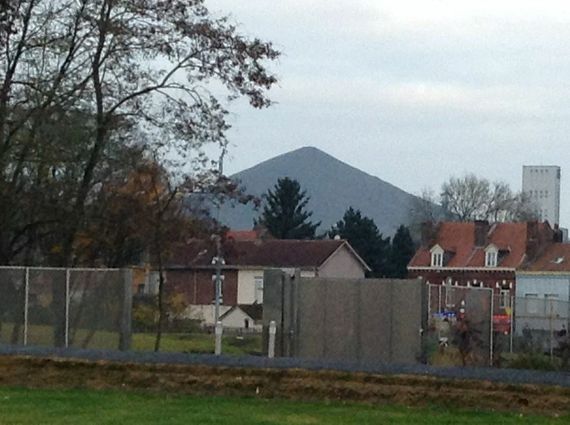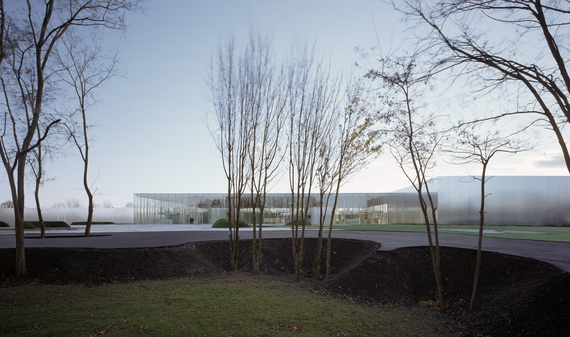Lens, France --
"Why would we print an article on an archaeological exhibit of 3000 year old vases in a museum in a dead mining town?" That's the reaction one of my fellow journalists got from a major weekly magazine concerning the stunning show that has just opened for the first anniversary of the Louvre's satellite museum here, the building itself an architectural jewel set against two monumental pyramids of coal tailings.
Three reasons, madam:
--The exhibit, open until spring, speaks to everyone: sex, power, ambition, death, rebirth in one of the world's most beautiful settings: Etrusca, not know as Tuscany.
--The town, Lens, is within easy driving distance from Belgium, Rotterdam, the British Ferry port and Paris.
--Once again, the early evidence is strong that real investment in art and architecture can raise the dead, socially and economically.
This month marks the one-year anniversary for the opening of the Louvre-Lens, and against even the most optimistic predictions, some 900,000 people -- half of them foreigners -- have walked through the glass walls and doors of the museum, turning the local shopkeepers, restaurateurs and hoteliers to bubbling joy. Overall spending in the region, Nord Pas de Calais, over the last year is up 10 percent while almost everywhere in Europe, spending is down.
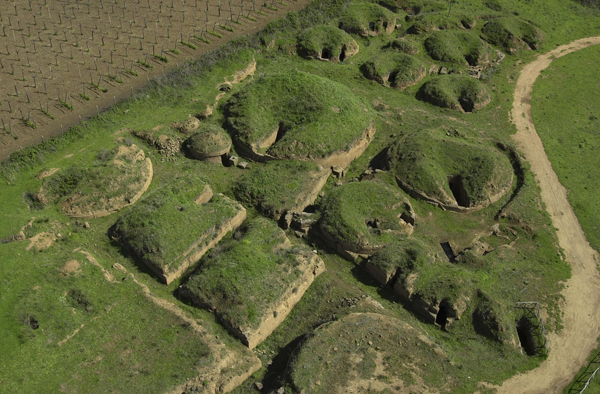
Cycles of boom and bust are also at the heart of the current main exhibit, "The Etruscans and the Mediterranean: The City of Cerveteri." Well before Augustan Rome and more or less the same time as classical Greece -- 700 to 300 BC -- Cerveteri was booming. Sculpture. Glassware. Ceramics. Lush gardens and villas. Daring architecture. And trade. Cerveteri's story is organized historically from its birth in the 8th century BC through its flower as Italia's most prosperous city state and its aristocratic mimicry and importation of Greek art through its fall to the Roman Military at the end of the 4th century BC.
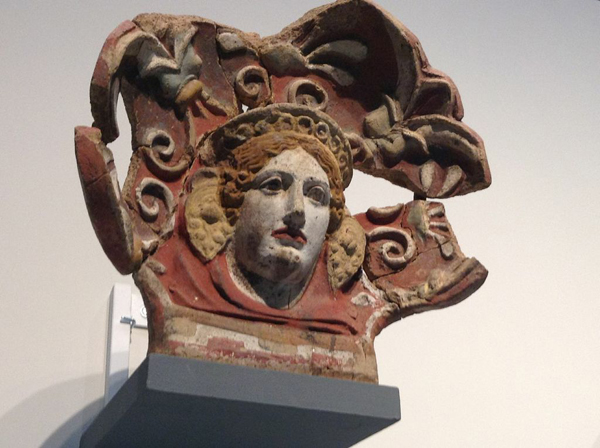
Most of the Cerveteri pieces in Louvre-Lens come from magnificent tombs, first uncovered almost 200 years ago, but a number of stunning architectural pieces come from portions of temples and villas from the 6th century BC when it became the height of fashion for the Etruscans to copy and sometimes improve upon Greek design and decoration.

Sophisticated ceramics and exquisite vases came to decorate the villas of the wealthy. Fine jewelry handsome men and women as Cerveteri outshined all is Etruscan and even Roman neighbors.
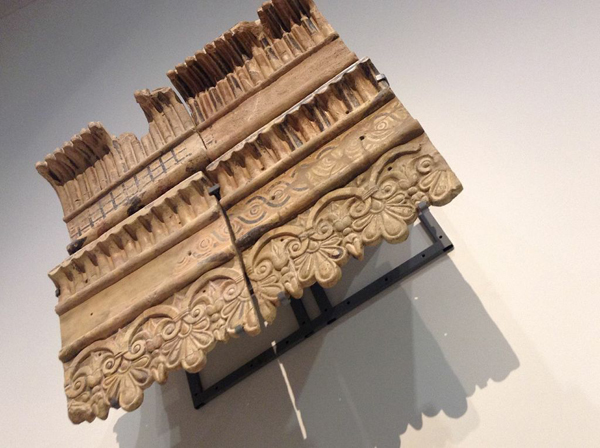
Oppulence and ostentation, as always, bore a price, and for the Etruscans, it meant that the more warlike Romans less than 50 miles to the south decided to act and put them in their place in greater Italy.
If it's an old story of power, glitter, decline and subjugation, this latest version of its presentation in a luminescent museum makes it more accessible than in traditional stuffy museum displays. The whole design of Louvre Lens aims to encourage visitors to wander, move back and forth, walk around the objects and return to look again. It's also plain that whatever is on exhibit today will not be permanent and will soon enough be replaced by other history and other art--as were the Etruscans themselves.

